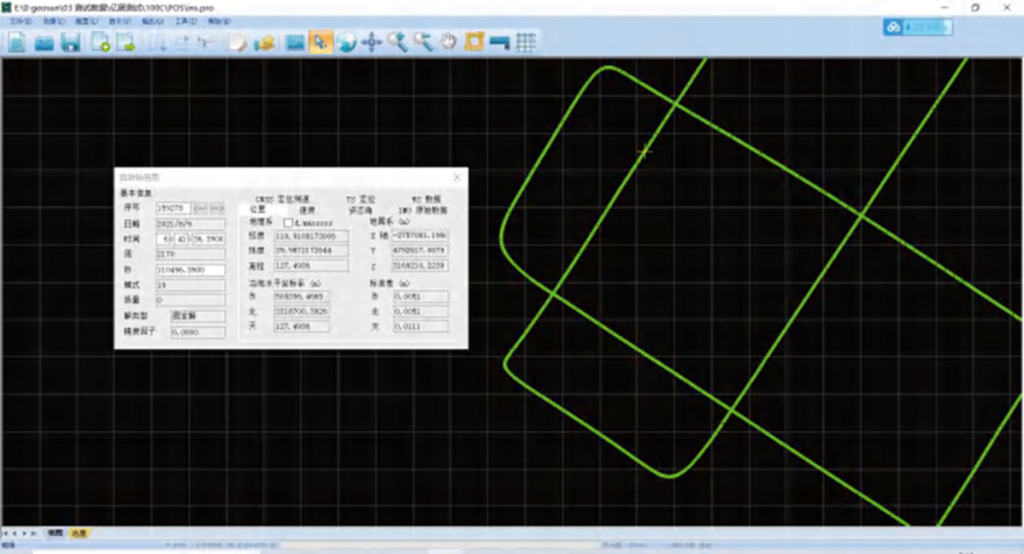3D LIDAR for Drones
 |
 |
 |
 |
 |
|||
|---|---|---|---|---|---|---|---|
|
Model |
Gs100G |
Gs100C+ |
Gs100V |
Gs130X |
Gs260X |
||
|
Weight |
1.8kg(with battery) |
1036g |
1.4kg |
1.26kg |
1.9kg |
||
|
Measuring accuracy |
5cm@100m |
≤ 10cm @110m AGL |
Less than 0.1m @100m |
≤ 10cm@150m AGL |
10cm/5cm (@150m) |
||
Working temperature |
-20℃~+55℃ |
-20℃~+55℃ |
-20℃~+55℃ |
-20℃~+55℃ |
-20℃~+65℃ |
||
Power range |
12V-18V |
12 V- 16 V |
|
12 V- 16 V |
12 V- 24 V |
||
Consumption |
25W |
Average 20 W |
Average 20 W |
Average 15 W |
20 W |
||
Carrying Platform |
Hand-held, Multi-rotor and Vehicle |
Multi Rotors/VTOL |
Drone and Vehicle |
Multi Rotors/VTOL |
Multi Rotors/VTOL |
||
Storage |
Build-in Flash memory 64GB, Support microSD 256GB |
4GB, Max support 128GB TF card |
4GB, Max support 128GB TF card |
4GB, Max support 128GB TF card |
4GB, Max support 128GB TF card |
||
Detection Range |
80m@10% |
190m@10% |
80m@10% |
200m@20% |
200m@20% |
||
Laser class |
√ |
905nm Class1 |
905nm Class1 |
√ |
√ |
||
Laser line number |
16 Channel |
64-beam |
16-Channel |
32 Channel |
32 Channel |
||
Max. range |
120m |
450m |
120m |
200m |
200m |
||
Range accuracy |
±1.5 cm |
2 cm (1σ @ 20m) |
±1cm |
|
√ |
||
Scanning frequency |
None |
None |
10HZ, 20HZ |
None |
None |
||
Laser pulse frequency |
None |
None |
None |
None |
None |
||
date |
Dual echo 640,000 Points/Sec. |
Triple echo 720,000 Points/Sec |
Double echo 640,000 Points/Sec |
Double echo 1,280,000 Points/Sec. |
Double echo 1,280,000 Points/Sec. |
||
FOV |
H:360°, V:270° |
70°x 77.2° |
360° |
360° |
360° |
||
Laser sensor |
HESAI XT16 |
Livox Avia |
HESAI XT16 |
HESAI Pandar XT (Customize) |
HESAI Pandar 40P |
||
POS system |
gSpin 210 |
AGS 302 |
AGS 302 |
AGS 303 |
AGS 303 |
||
Update frequency |
200HZ |
√ |
200HZ |
√ |
√ |
||
Heading accuracy |
0.040° |
0.040° |
0.040° |
0.017° |
0.017° |
||
Pitch accuracy |
0.015° |
0.015° |
0.015° |
0.005° |
0.005° |
||
Rolling accuracy |
0.015° |
0.015° |
0.015° |
0.005° |
0.005° |
||
Position accuracy |
Horizonal 0.02m Elevation 0.03m |
≤ 5 cm |
≤0.05m |
√ |
√ |
||
GNSS signal type |
GPS L1/L2/L5, GLONASS L1/L2, BDS B1C/B1/B2/B2a/B2b/B3, GALILEO E1/E5b/E5a |
GPS L1/L2/L5,GLONASS L1/L2 BDS B1/B2/B3,GAL E1/E5a/E5b |
GPSL1/L2/L5 GLONASSL1/L2 BDS B1/B2/B3 GAL E1/E5a/5b |
√ |
√ |
||
Trajectory Software |
√ |
√ |
√ |
√ |
√ |
||
Point cloud software |
√ |
√ |
√ |
√ |
√ |
||
Sony A6000 (Industrial) |
Option |
Standard |
Standard |
Option |
Option |
||
|
|
Agricultural Remote Sensor
Foresty Survey
Smart City Corporation
Powerline Patrol
Topographic survey
Rail Maintanance
Mine Survey
River Beach Survey
POS SYSTEM
The Gspin aviation application product is an integrated GNSS / INS system designed and developed for geo-referenced aircraft direct
sensor data. By integrating high-precision differential GNSS positioning technology with INS navigation technology, it makes the solution of position and attitude information of spatial objects more accurate and efficient. Gspin can be integrated with aerial cameras, a variety of image sensors and lidar technology.

Gspin is based on the direct geographic reference method. It is a revolutionary technology in aeronautical investigation
And the remote sensing industry. Direct geographic reference is to directly measure position and sensor data
(also known as external orientation elements) without further information about the ground control point.
These parameters make it possible to directly resolve data collected by airborne sensors
With reference to the earth or local coordinate system.
The Gspin aviation application product is an integrated GNSS / INS system designed and developed for direct georeferenced airborne sensor data.
Integrating high-precision GNSS differential positioning technology with INS navigation technology,
makes the solution of position and attitude information of spatial objects more accurate and efficient.
Gspin can be integrated with aerial cameras, a variety of image sensors and lidar technology. Gspin is based on the direct geographic reference method.
This is a revolutionary technology in aviation survey and remote sensing.
Direct geographic reference is to directly measure the position and sensor data (also known as external orientation elements) without any additional information about the ground control point. These parameters allow data collected by airborne sensors to be resolved directly with reference to the earth or local coordinate system.
Main feature
- Provide a real-time or high-precision post solution for the motion vector
- Can replace aerial triangulation and full ground control point measurement
- The existing DEM can be used for pattern mapping of a single stereo image pair and correction of a single chip
- Greatly improve the production efficiency and accuracy of traditional aerial mapping applications
- Easy integration with digital cameras, lidar and digital scanners
- It is particularly suitable for sparsely populated areas without existing control points or applications that require rapid response
Talk to one of our Experts
DroneBase provides you with an Expert Advisor
Able to recommend the most appropriate product for your needs
And answer all your questions.
Call us NOW!
+39.0541.1790411
Request information
Please enter your details below, our consultant will
will contact back as soon as possible and provide you with all the details!
